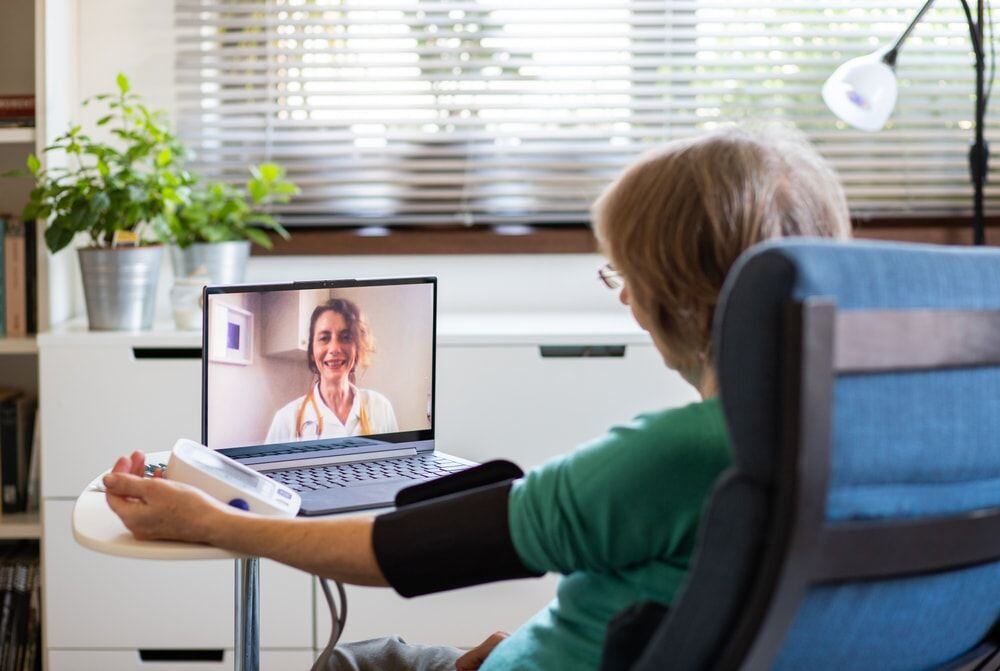What to Consider When Implementing Telemedicine During Coronavirus
Healthcare delivery through telemedicine has been around for several years now. However, the COVID-19 crisis has led to an exceptional surge in its adoption, one that had never been seen before.
According to a March 2020 study, 53% of the healthcare practitioners found they were using telemedicine because of the restrictions imposed by COVID-19, but they had never used telemedicine before the onset of this pandemic.
Thousands of Americans are now receiving care by connecting with a doctor electronically since it enables them to practice social distancing while reducing the spread of the disease and protecting health workers who are at the greatest risk of contracting infections.
Therefore, for any healthcare organization trying to deliver care during these unprecedented times, getting a telemedicine platform developed for your practice is the ultimate solution. However, there are some extremely crucial considerations that need to be taken before setting up a telemedicine platform, which we will cover in this piece.
1) Comprehend Appropriate Practice Guidelines to Initiate the Model
Although the pandemic may be forcing you to rush into telemedicine adoption right away, you first need to identify the legal liabilities that come alongside its adoption. This step is critical in ensuring a provider’s seamless transition to telemedicine.
The following are some of the factors to consider:
- The relevant state prescribing and licensure regulations. Also, is interstate practice part of the model and if you are using telemedicine to treat patients in another state, do you need a license there too?
- Is your state going to require a prior in-person visit or is a face-to-face (videoconference) visit going to be sufficient before prescribing?
- The relevant federal and state patient-consent, and security as well as necessities, including Health Insurance Portability and Accountability Act (HIPAA). You will also need to figure out if you are appropriately privileged and credentialed to provide telemedicine services. Remember to comply with HIPAA rules to avoid any breaches at your end.
- You need to check if your malpractice insurance carrier ensures significant coverage in the event of you having to practice in other states or via telemedicine. Remember to brief your carrier of your intent to leverage telemedicine.
- Is reimbursement for telemedicine available? You also need to contemplate if you completely understand the relevant telemedicine requirements and reimbursement structures for patients. This may include: Private coverage parity laws in the state of practice, Medicaid and/or Medicare requirements for reimbursement of services rendered, contractual services, self-pay.
Understanding clinical, technical, and regulatory requirements can aid your practice in successfully adopt a telemedicine service model. It is also important to remember that in the wake of the COVID-19 pandemic, the Office of Civil Rights (OCR) issued new guidelines on March 30th for health care providers.
These guidelines are aimed at extending leniency towards various clauses stated within HIPAA to pertain to the soaring healthcare demands and an increased need for virtual care amid the current crisis. If you want to ramp up your medical practice through telemedicine amid the ongoing pandemic and serve as many patients as possible, looking at the changing legal and regulatory measures can certainly help.
2) Identify a Service Model That Best Fits your Goals
For medical practices and health systems looking to integrate telemedicine as quickly as possible during the COVID-19 pandemic, identifying a service model that best fits your goals and caters to your user base not only offers a clear and efficient path to scaled implementation but also increases patient engagement and fosters better results for you in the long term.
There are ample service models that you can adopt in your practice. Some of these include:
- Providing direct care for patients via face-to-face video conferencing, either with or without peripheral devices, connecting to the patient's home; for instance, evaluating a patient for acute flu-like symptoms and then deciding if an in-person visit is going to be needed.
- Serving as an originating site to connect patients to physicians; for instance, using video conferencing to connect the patient, the primary care physician, and the cardiologist to establish a course of treatment for a patient with newly diagnosed cardiac disorder.
- Serving as an originating site to connect with other providers and present services through means of store-and-forward applications.
- Serving as a distant site by consulting with advanced practice nurses or other physicians.
- Serving as a distant site provider to offer follow-up visits and consultative services to patients either at the hospital or through offices via live-interactive video conferencing or through store-and-forward methods.
- Leveraging remote patient monitoring (RPM) tools to track chronic illnesses for patients in your practice that supplement in-person care and may avert hospital readmissions. For example, you can use devices such as glucometers, electronic scales, and sphygmomanometers to help remotely manage patients with congestive heart failure.
3) Determine the Support Needed While Following Privacy Laws
There are two key questions you need to ask yourself when thinking about incorporating virtual care into the care delivery model.
1. What problem are you trying to solve?
Virtual care can help address challenges that range from supporting patient acquisition and retention to overcoming barriers to patient access to mitigating physicians’ workload – and much more. Answering this question will help you refine your thinking about what platform will meet your needs.
2. Who are your patients?
Different patient demographic segments have varying preferences around how they access care. Understanding who you are trying to reach will help inform what access point - or points - are needed.
Healthcare providers can easily follow this checklist prior to launching their first virtual visit platform:
- Understand relevant technical requirements for the service that will be provided (e.g., peripheral devices such as otoscopes, ophthalmoscopes, and electronic stethoscopes that may be required at the originating site).
- Select HIPAA-compliant technologies, hardware and software, and enter appropriate Business Associate Agreements.
- Encrypt data to help protect it from a privacy breach.
- Seek out devices and technologies that are interoperable.
- Ensure FDA clearance or approval of devices and mHealth apps and technologies when required.
- Find connectivity of sufficient bandwidth and with quality of service to support the type of care you will be providing.
- Consult with your broadband provider if additional bandwidth is required for your telemedicine service mode.
- Choose technologies that fully comply with HIPAA.
- Ensure adherence to appropriate informed consent and documentation requirements.
- Wherever possible, conform to practice guidelines developed by specialty societies that may contain guidance on selecting appropriate technologies.
- Develop an emergency plan in case the escalation of care is required or technology fails.
You really want to start by looking at your workflow and (determining) how you embed the technology.
Ready to Implement Telemedicine?
Healthcare providers, especially small practices and solo providers, need to think diligently about virtual care. In most cases, they lack the overhead to survive a failed project and the resources to experiment further. You need to look at your own base of patients, select a service that can be easily moved online, and match the technology to the service thereafter.
Carefully thought out strategy for integrating telemedicine within your practice, being mindful of the legal and regulatory requirements, and ensuring stringent data security measures to stay compliant with them is absolutely essential. All you need to do is to use technology to your advantage and reap all the benefits telemedicine offers.
About Rahul Varshneya
Rahul Varshneya is the co-founder and president of Arkenea, a digital health consulting firm. Rahul has been featured as a technology thought leader across Bloomberg TV, Forbes, HuffPost, Inc, among others.



